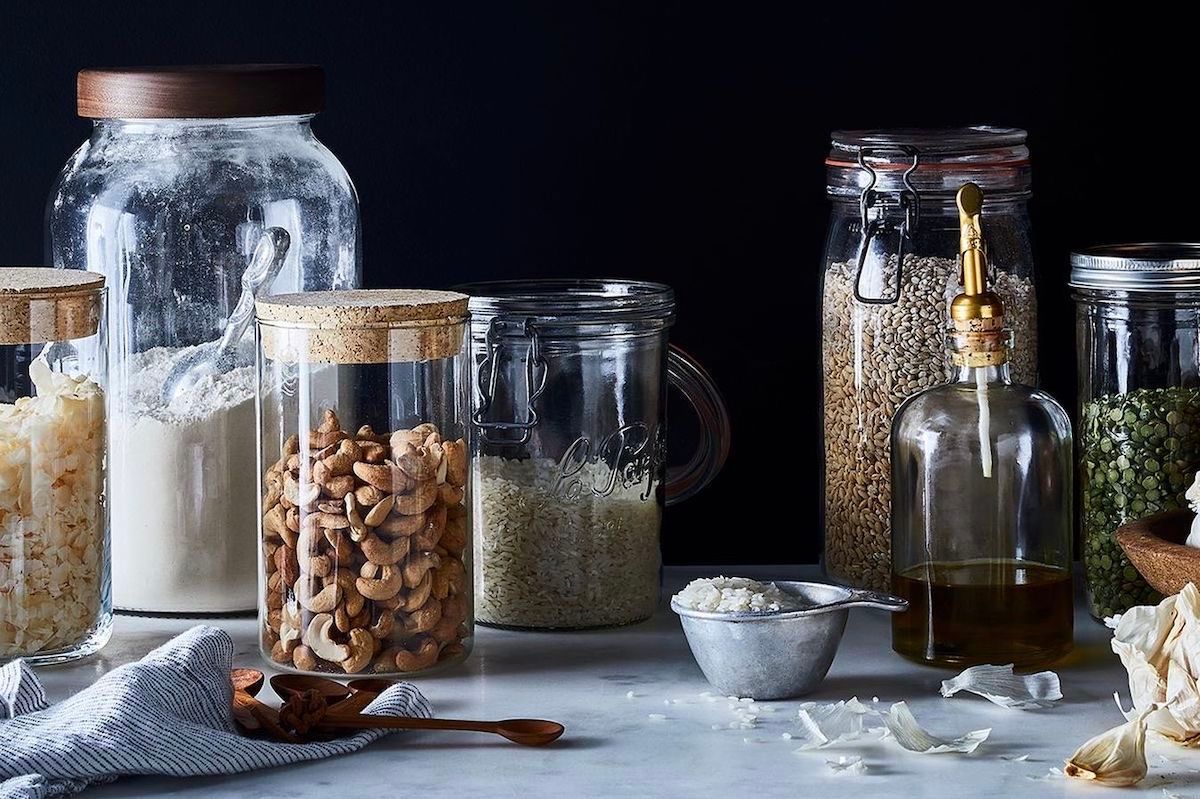Welcome to Storage Wars, a new series about the best ways to store, well, everything. From how to keep produce orderly in the fridge (or not), to ways to get your oddball nooks and crannies shipshape, and, yes, how to organize all those unwieldy containers once and for all — we've got you covered.
* * *
Allow me to paint you an upsetting word picture: I woke up one morning last spring to find that a mouse had entered the kitchen (bad) and managed to chew through a heavy-duty Ziploc bag, a large-sized Bee's Wrap, and parchment paper (worse) to gnaw at a loaf of sourdough bread that took me three days to make (the horror!). Reader, when I tell you I screamed.
While this scene could be rewritten into my "Why I'm Leaving New York'' essay, it instead has become the grounds for my — now even more militant than ever — approach to kitchen pest control. And also another item in the "pro" column for why I absolutely need to adopt a cat. I've actually always been extremely cautious about pests in the kitchen: It simply comes with the territory when you're living with a poorly constructed rental kitchen in a prewar building, and work with food to boot. But even if critters aren't a part of your daily life, you never know what's lurking out of sight.
Pest control in the kitchen, particularly in the pantry, may take a bit of reorganization. Or, depending on your current setup, a lot of reshuffling. Is it necessary nonetheless? Without a doubt. If you've ever opened up a bag of flour to find it crawling with bugs or dealt with a similar mouse situation (I'm so sorry), you'll heed this warning.
Check food for pests first
As soon as you bring home ingredients, particularly bags of flour or boxes of dry goods that are easy to sneak into, open them and peek inside to make sure the only stuff in there is what you bought — no uninvited guests. (It's probably not going into your pantry, but make sure your produce is bug-free as well before storing all your fruit and veg). PS: Since you're starting this process, I'd recommend you check open bags already in your pantry for any intruders, as well as seal up any holes in your physical pantry before moving on to the next step.
Transfer dry goods to airtight containers
Once you've opened bags or boxes, you've essentially unlocked the door to any critters looking for a cozy home. Transfer dry goods to a fleet of sturdy airtight containers — organized and pest-free, what could be better.
Store fresh produce you don't want to refrigerate under a cloche
I know nothing's cuter than a bowl of fresh fruit on the table (and the easiest way to ruin a perfect tomato is to put it in the fridge), so I have a solution. Though they may seem like a decor trend you don't want to spend money on, a cloche is actually an ideal pest deterrent when you want to keep produce out at room temperature without attracting critters. Cake rarely lasts long enough in my kitchen to warrant the use of a cake stand, but I've taken to using the one I have (which has a lid) to store my tomatoes and peaches — which, let's be honest, when in their prime are just as precious as a chocolate-frosted genoise.
Store other prepared or snack foods in lidded containers or bowls
You could store freshly baked cookies under a cloche, but I prefer to keep those (as well as other prepared foods that should stay at room temperature) in containers or bowls. If you'd prefer more air circulation, opt for a bread box. This is also where I store potatoes and onions. (All other produce is bought in small quantities and goes in the fridge, which is cool and dark enough for a couple days' stay.)
Already dealing with critters? Try these:
Set up a fruit-fly catcher (And other traps)
Let's focus on the rest of the kitchen — because the pantry isn't the only place you might find pests. If you're having issues with fruit flies, set up a bowl with apple cider vinegar and a bit of dish soap in the areas of the kitchen where you're seeing bugs (see this post for the specifics). For ants, some suggest a mix of borax, sugar, and water (see this article for details) — though I tend to use those little traps you can buy at the hardware store. For mice, I avoid using sticky or snappy traps (I've tried "humane" ones that give you the option to release the critters, but I think the mice in my building are too smart for them); ultimately I've found nothing keeps mice away like not having food out in the open, nor stored in any packaging thin enough to chew through. Also, it's clear that cats do genuinely help keep mice and other bugs at bay. (If my partner is reading this: We should really get a cat.)
Call in a professional
If you're at your wit's end and nothing seems to keep the pests at bay, I'd highly recommend calling in an exterminator to take a look. Hey, it's cheaper than moving.




Shares